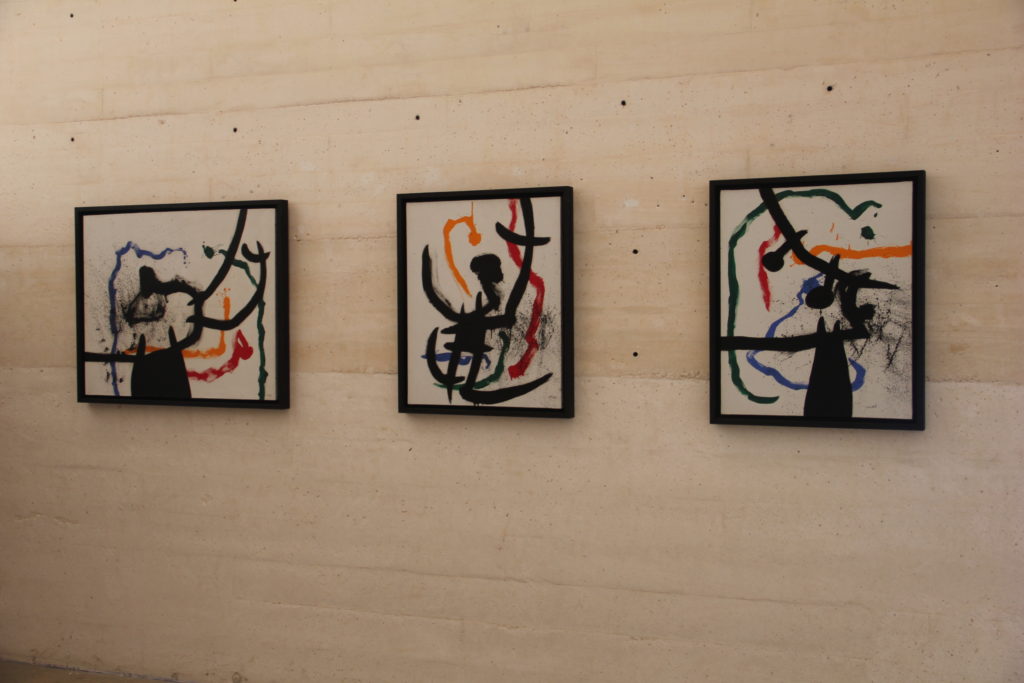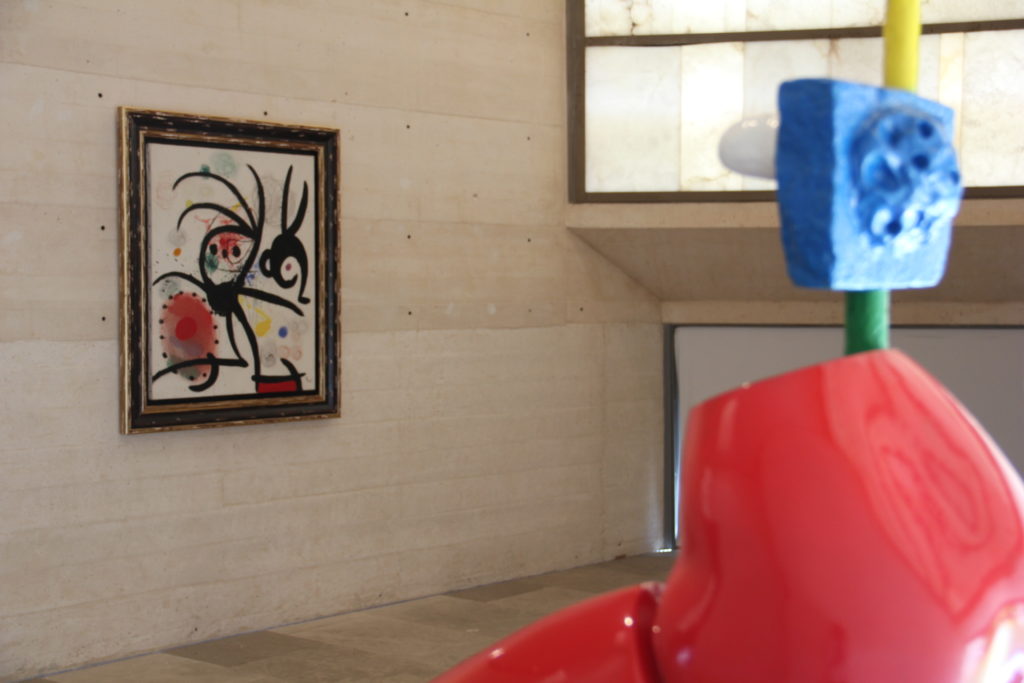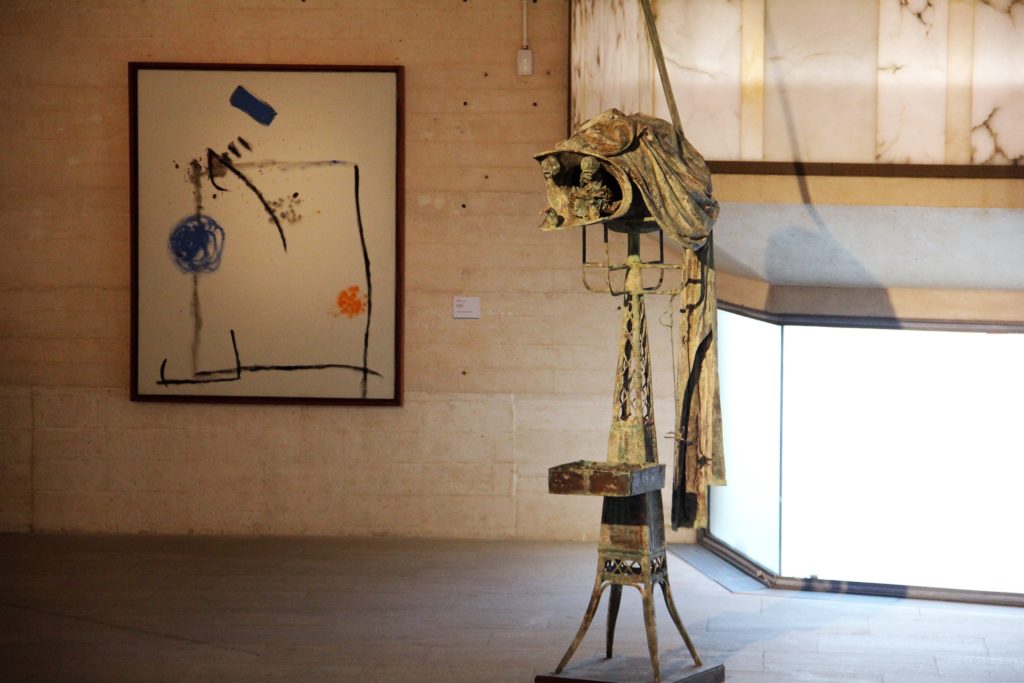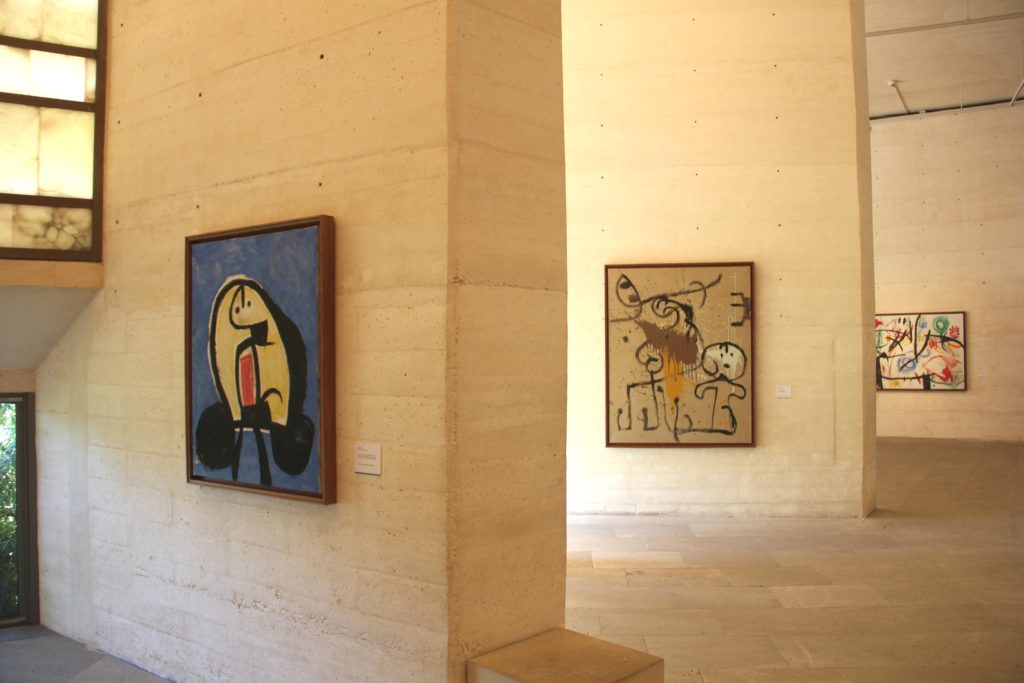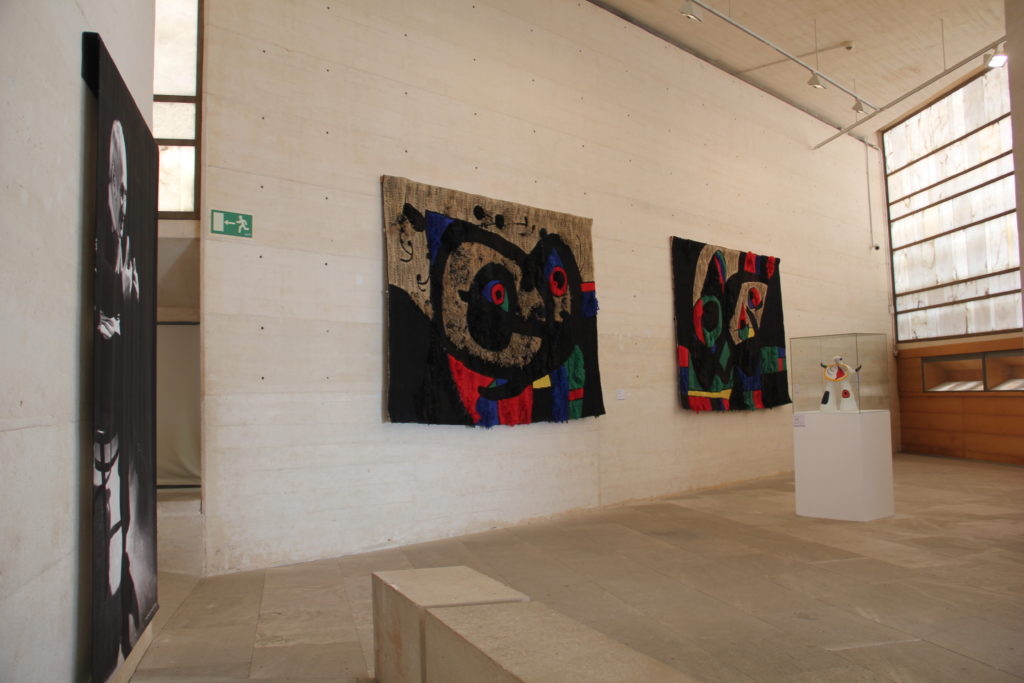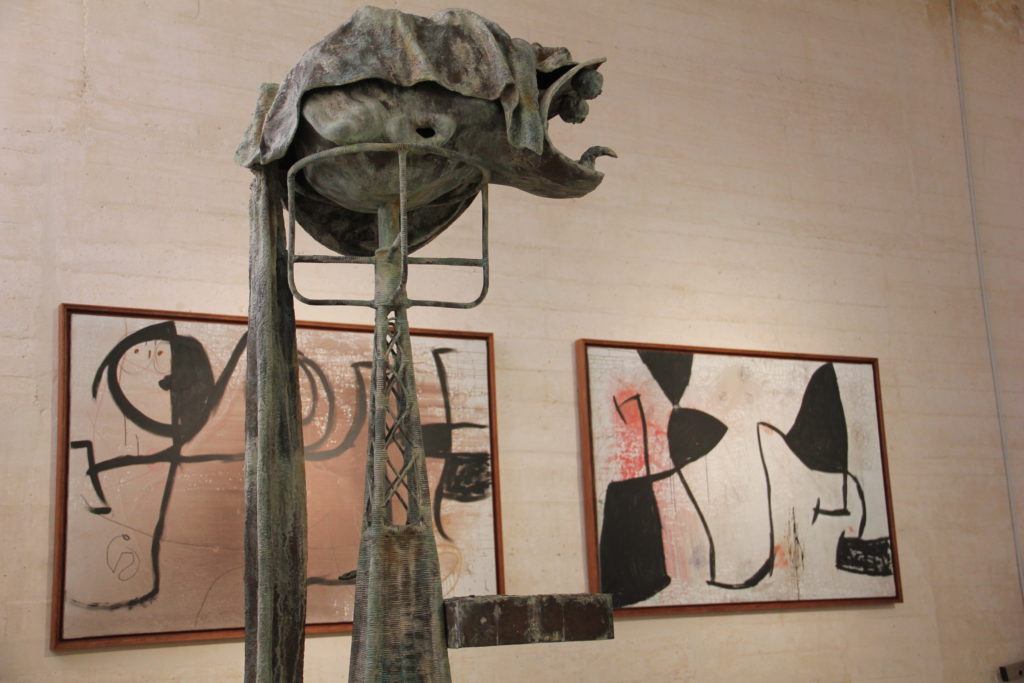
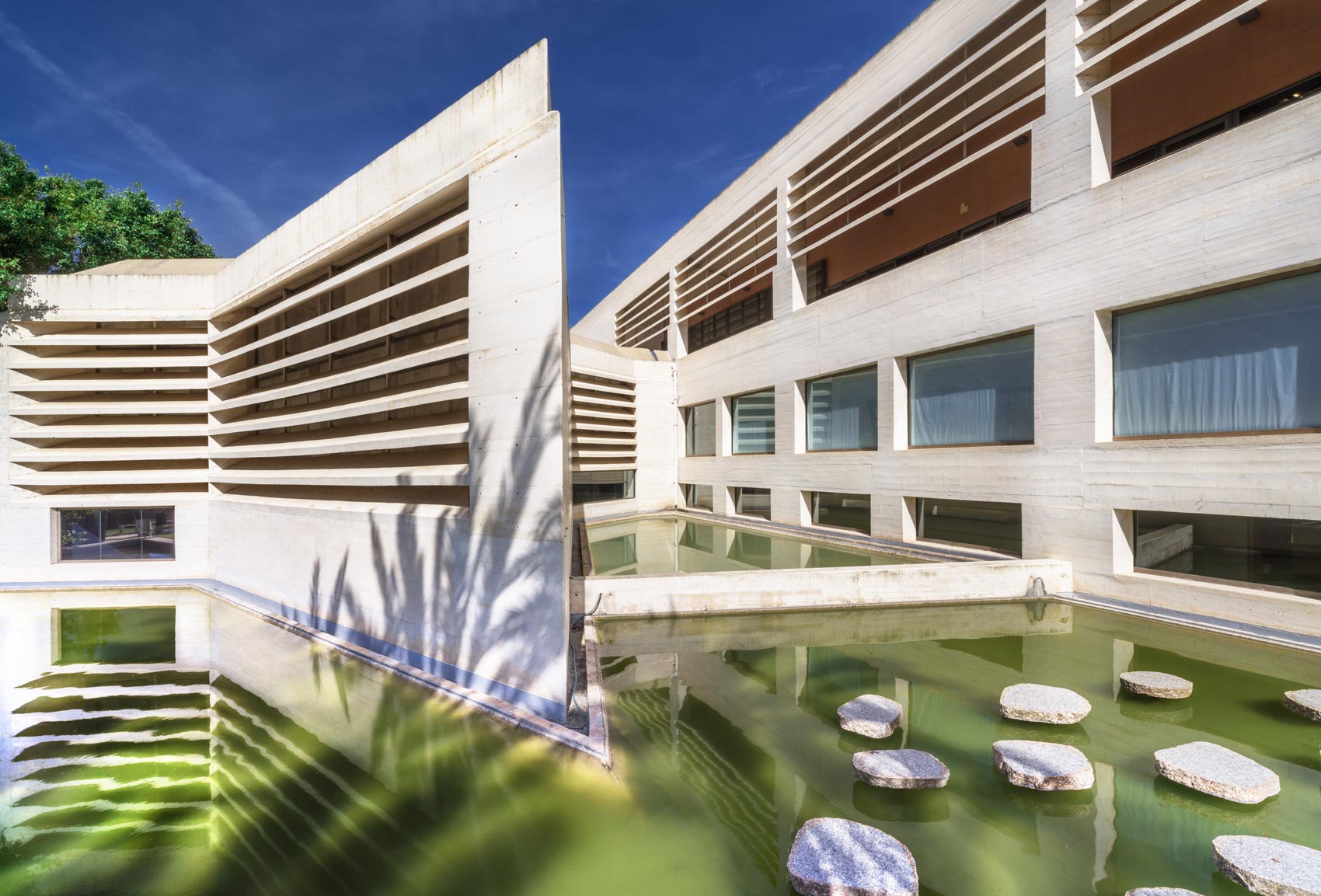
Moneo building
L'edifici Moneo, seu actual de la Miró Mallorca Fundació, es va inaugurar el 1992. Projectat per l'arquitecte Rafael Moneo és el resultat de la donació de Pilar Juncosa, vídua de Miró, a la Ciutat de Palma.
-
Exhibition space
- Espai Estrella
- Espai Cúbic
- Espai Zero
-
Dates
- 18 May 2019 — 31 October 2021
-
Inauguration
- 18 May 2019
- 10:00
Miró
The exhibition "Miró" brings together a total of 109 works, including painting, sculpture, graphic work, drawings, tapestries and preparatory drawings, all dated between 1944 and 1981. The works are part of the Fundació Pilar i Joan Miró a Mallorca's collection. It is a temporary installation that aims to offer a vision of the Foundation's collection and the work and creative process of Joan Miró.
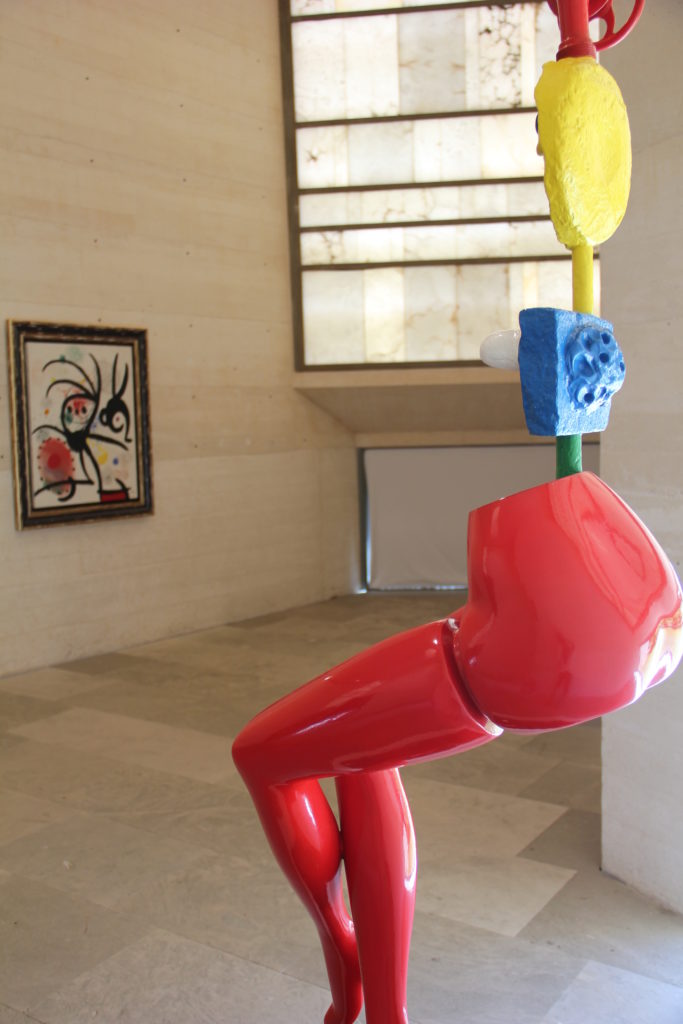
This exhibition takes a look at the Fundació Pilar i Joan Miró a Mallorca’s art collection through a broad well-assorted selection of paintings, sculptures, drawings, prints and tapestries from the permanent collection and temporary loans from private collections. It has been mounted in such a way that new interplay is sparked off among the works on show, offering a clear global insight into the collection and also into Miró’s creative process.
Joan Miró’s final years on the island were the most prolific in his artistic career. One third of all his work was produced in his two Mallorcan studios: the Sert Studio and Son Boter. Following his move to Mallorca in 1956, Miró embarked on a radical stage of self-questioning and renewal, reinventing his vocabulary of signs and symbols. The artist would define this stage as a break-away more than a process of evolution.
A rejuvenated revolutionary Miró set himself new challenges, opening up new unexpected paths. His interest focused on the creative process, with the resulting (never preconceived) images always emerging at the end. He let himself be guided by the materials’ own dictates and insinuations. He boldly experimented, discovering new techniques and taking their possibilities to the limits. Canvases were consumed with stains, splashes and drips, manifesting an energy that brought the whole surface to life. He became physically engaged in the process, often working on the floor, painting with his fingers and leaving traces of his presence on the final canvas.
The outcome was a radical change in his visual language, with works that stand out for their strong expressiveness, where violence and a desire to break-away contrast with the stripping down process and silence in an eternal bid to push back the boundaries of painting. The final Miró abandoned himself to a more immediate form of expression, to gesture and total reductionism. He was simply Miró.
